Lamar Odom’s story in the pages of Sports Illustrated over the years
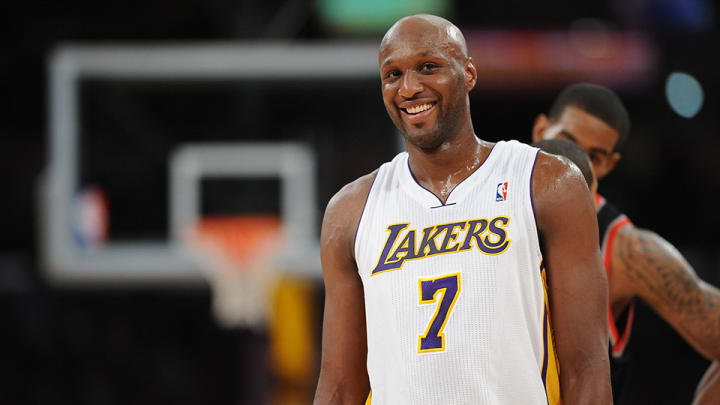
Former NBA player Lamar Odom, the 2011 Sixth Man of the Year and a two-time champion with the Lakers, remains hospitalized in Nevada, where he is fighting for his life after he was found unconscious.
The 35-year-old New York native graced the pages of Sports Illustrated for nearly two decades, dating all the way back to his days as a prep phenom in the mid-1990s. Take a look back at Odom’s life and NBA career with the following magazine snippets, which trace his journey from New York’s high school basketball scene, to his single season at the University of Rhode Island, to his selection by the Clippers in the 1999 draft, to his brief stay with the Heat, to his championship heights with Kobe Bryant’s Lakers, and to the twilight of his career that included a controversial non-trade and pit stops with the Mavericks and Clippers.
Fall 1996
Odom is included on a list of high school seniors to watch alongside Shane Battier and Elton Brand. By Mark Bechtel.
4. Lamar Odom, F, 6'9"
Middle Village, N.Y. (Christ the King)
Odom, who averaged 17 points and 11 rebounds as a junior, considered transferring to Maine Central Institute to get his academic house in order. His decision not to transfer may be an indicator that he is planning to skip college and go straight to the NBA.
September 8, 1997
Odom is courted by the Continental Basketball Association after his ACT score was questioned, raising questions about how the NBA should handle talented teenagers that still linger today. By Richard O’Brien and Hank Hersch.
Herb Livsey spends a good part of his time identifying the nation’s top high school players and wooing them. His current target is Lamar Odom, a 6'9" New York City phenom, and though he has yet to meet Odom, he has made inroads with Odom’s AAU coach and with his aunt.
Livsey, however, is not a coach. He's the Continental Basketball Association’s director of player development, and he's recruiting Odom at the behest of CBA commissioner Steve Patterson. “We are pursuing [Odom] through the same avenues as college coaches,” says Patterson. “And we are pursuing him for the same reason: He can have a financial impact. The difference is, we’ll pay him.”
The pursuit of Odom is the first step in Patterson’s plan to transform the CBA from a forum for failed or fading pros into a farm system similar to baseball’s minor leagues, which develop young players and are subsidized by big league organizations. The NBA, which drew 45 players from the CBA last season, has not yet taken a position on the league's more aggressive approach to recruiting teens. “I believe in everybody getting the best education he can,” NBA deputy commissioner Russ Granik says. “But there’s some sense to the notion that if a player’s not interested in an education and not good enough yet to be in the NBA, he ought to have some place to play.”
November 23, 1998
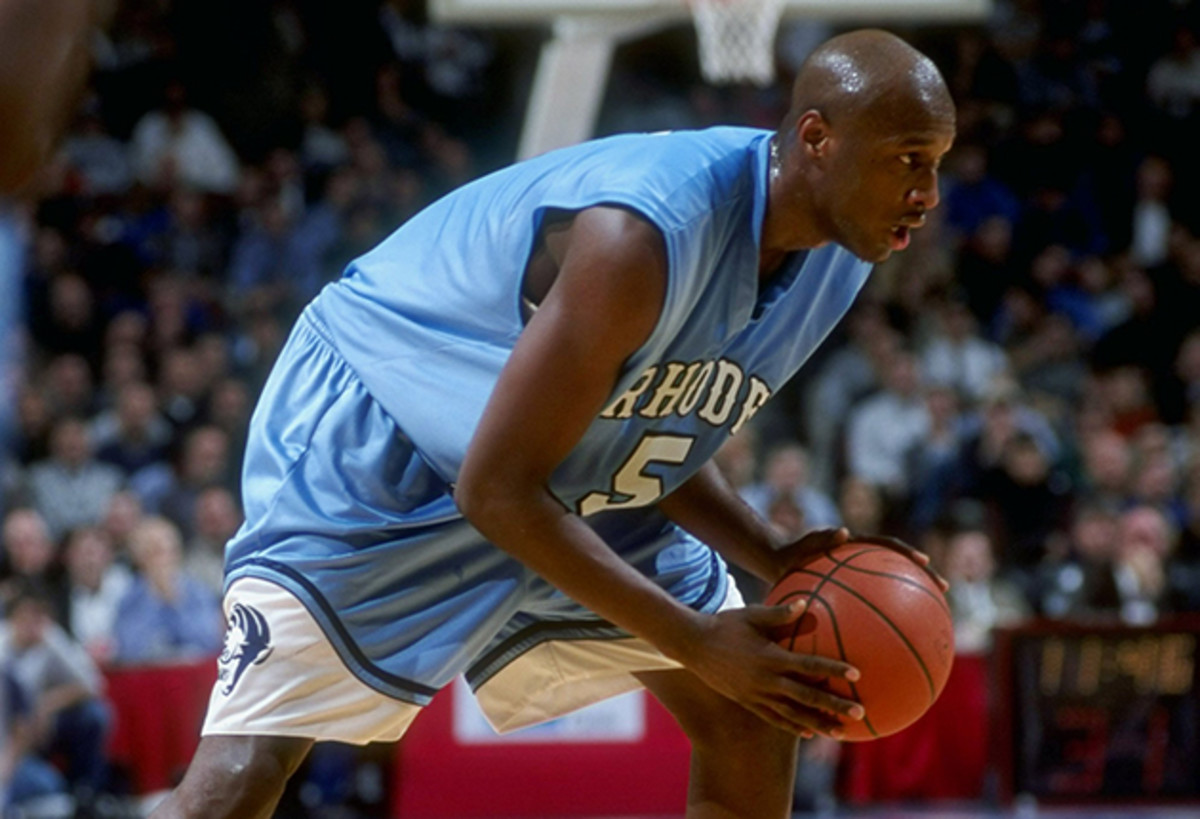
Excitement builds at the University of Rhode Island as Odom prepares for his only college season. By Seth Davis.
“It seems like I’ve been talked about in Rhode Island more than some pros,” he says. “Sometimes people build you up to be something you’re not ready to live up to.”
Odom is ready. In his debut, an 87–85 victory over TCU, he was one assist shy of a triple double, hit the game-winning shot, and flashed a range of skills that could make him the top pick in the 1999 NBA draft. His arrival will help fill the talent void left by the departure of the Rams’ two best players, guards Tyson Wheeler and Cuttino Mobley, who last season led the team to the Elite Eight for the first time in school history. While Odom will start on a front line of Reynolds-Dean and 6'9" junior Luther Clay, who came on strong after battling through ankle and foot injuries during the regular season, he’ll be playing power forward, small forward and, on occasion, the point. “It's a huge amount of pressure,” Odom says. “But I think I’ve matured a lot.”
June 28, 1999
Odom makes his first impression in the NBA, prior to the 1999 draft, after the NCAA ruled he couldn’t return to Rhode Island. By Jackie MacMullan.
Lamar Odom’s only visit to an NBA team—Vancouver, on June 3—was like a trip to Disneyland. He bonded with smiling general manager Stu Jackson and coach Brian Hill, who own the No. 2 pick in the June 30 draft. Odom was impressed by the sparkling city and was encouraged by the young Grizzlies lineup, which includes Shareef Abdur-Rahim and Mike Bibby. Even Odom’s workout, which got off to a rocky start because he was very nervous, had one of those sticky-sweet happy endings. “His shots in the beginning weren’t going down,” says his former attorney, Jeff Klein, “but he sucked it up and suddenly found it. That's what the coaches were talking about afterward. They were struck by his poise.”
November 1, 1999
The perennially awful Clippers take Odom at No. 4 and he enters the storm. By Phil Taylor.
The comedy of errors that is the Clippers is back and coming to an arena near you. The cast of characters is slightly different, but the plot is essentially unchanged: A bumbling team tries to transform itself from a punch line into a powerhouse with the aid of a lottery-pick rookie who it hopes will develop into a superstar. Folks in Hollywood haven’t seen this many bad sequels since the Police Academy films. This year the role of the hotshot newcomer is being played by 6'10" Lamar Odom. Los Angeles can only pray he’ll do more with the part than former first-round choices Benoit Benjamin, Reggie Williams and Bo Kimble.
The versatile Odom appears to have the skills to be a leading man. In the preseason the Clippers played him at every position but center, and he performed well at them all, validating the opinions of those who said he was the most talented player in June's draft. But he also has a past that's harder to follow than a Bergman film, which suggests that he, and this year’s version of the Clippers, could wind up as yet another flop.
October 30, 2000
Odom, who appeared on the cover of SI’s NBA preview issue with Clippers teammate Darius Miles alongside the headline “Young and Youngest,” adjusts to NBA life. By Phil Taylor.
SI Vault: The odyssey of Lamar Odom
Alvin Gentry is a man of good cheer and great optimism, but he is also the new Clippers coach, which means he’ll be lucky if those qualities survive until the All-Star break. For now, however, Gentry can spot silver linings faster than a metal detector. He has the league’s second youngest squad, players who don’t even know where to go out for dinner after the game much less how to defend the pick-and-roll, yet he makes their inexperience seem like a virtue. “We may not know what the hell we’re doing,” he says, “but at least it makes us hard to scout.”
Gentry’s kids, including three rookies (forward Darius Miles and guards Keyon Dooling and Quentin Richardson) and two second-year players (forwards Corey Maggette and Lamar Odom), have talent, but he believes that they can’t become winners until the team has established an atmosphere of professionalism. Since being hired in August, Gentry has banned cell phones from the locker room and team bus, decreed that shirts must be tucked in during practice and warned that he would not tolerate tardiness. “He told us that it’s be on time or be left behind,” says Odom. “That goes for players, coaches, trainers—everyone.”
April 2, 2001
Things start to look up for Odom and the growing Clippers. By Ian Thomsen.
No one could persuade Odom, Keyon Dooling, Corey Maggette and Quentin Richardson that they should not leave college after a mere season or two—or Miles that he should not turn pro straight out of high school—and no one can tell these players that it's bad to be a Clipper. “A rap album by Jay-Z called The Dynasty came out the first day we played this season,” says Odom. “That’s what we’re trying to create here, a dynasty.”
The main building block is Odom. Only two years ago he was trying to reverse his decision to turn pro and was blowing off workouts with the teams that were thinking of drafting him. Now Odom, along with center Sean Rooks, is captain of his NBA team. Odom recently served a five-game suspension for violating the league’s antidrug program. Sources told the Los Angeles Times that he tested positive for marijuana and then failed to comply with the NBA’s mandated aftercare program. The setback made clear to Odom how important he is to his young teammates. “They let me know that the atmosphere in the locker room was a lot different without me,” says the 6'10" forward, whose sense of humor keeps the Clippers loose.
November 3, 2003
Odom signs with Miami to play for Pat Riley, but Riley suddenly resigns as coach. By Jack McCallum.
Stan Van Gundy said he was surprised by the resignation largely because the 58-year-old Riley had seemed “rejuvenated” and added that “it's hard to envision Pat anywhere but on a sideline.” Moreover, the Riley name still has clout, even with young players; Odom made no secret of the fact that he signed with Miami because he wanted to be coached by Riley. (That might be the first issue Van Gundy has to deal with.)
April 19, 2004
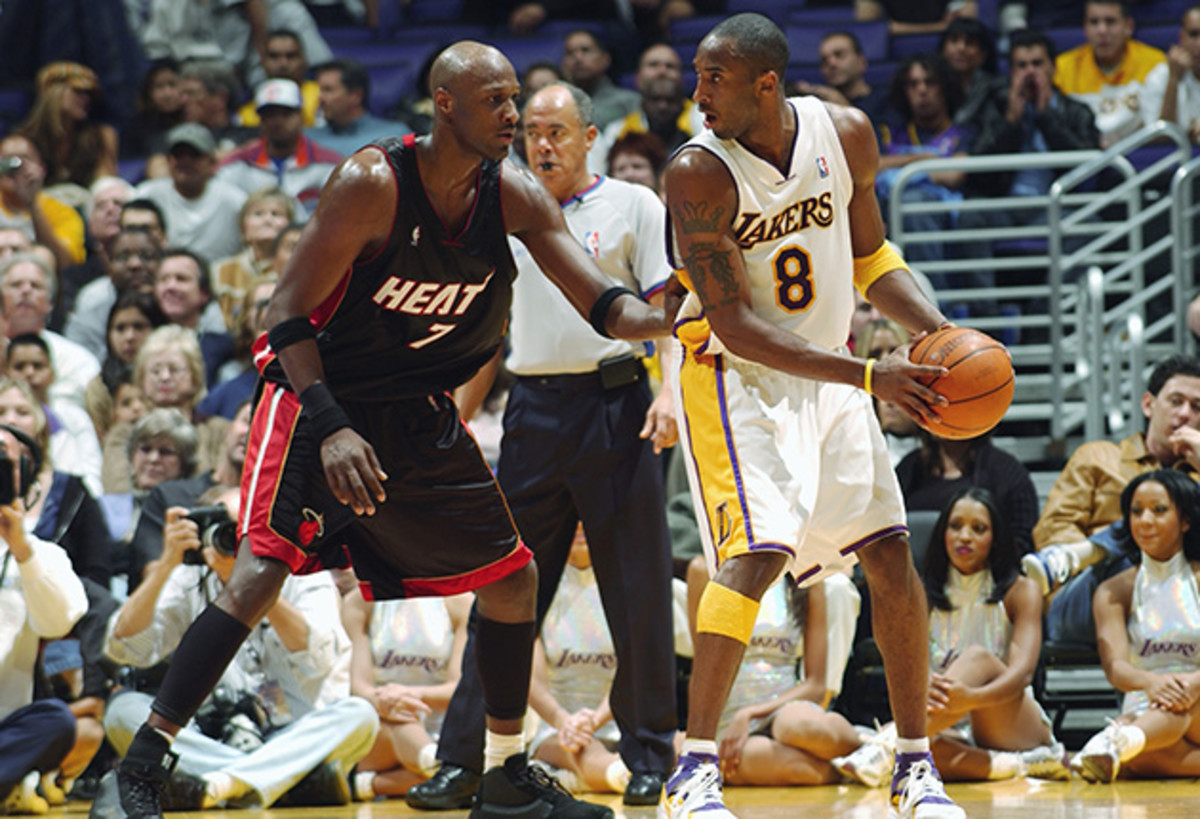
Odom makes his postseason debut with the Heat. By Chris Ballard.
Last week, after the Heat had locked up its first playoff berth since getting swept in 2001, point guard Rafer Alston adopted a mock news-anchor tone as he interviewed forward Lamar Odom for a Miami TV station at the team’s practice facility. “So, Lamar, this is your first time in the playoffs, and it’s my, what?”—at this, the 27-year-old Alston pretended to have trouble counting them all—“Oh, it’s my third. Well, we’re happy for you. This is your fifth year in the league, and we didn’t want to see you get to your 11th year and still not be there.”
The 6'10" Odom laughed and agreed heartily. And though he downplayed his excitement over finally reaching the postseason, Alston, who has known Odom since their playground days in New York City, wasn’t fooled. “He can't hide it from me,” Alston said, shaking his head. “And he deserves it. He’s a guy who’s been injured so much, and he’s on pace to play 80 games. He’s put up All-Star numbers and been our most consistent player.”
October 25, 2004
An older, wiser Odom returns to L.A. to play for the Lakers after being included in the trade for Shaquille O’Neal. By Chris Ballard.
The L.A. Odom—version 1.0, at least—was inconsistent, injury-prone and twice suspended for violating the league's drug policy. “I became a better player and a better man in Miami,” Odom says. “I grew up a lot.”
That’s a good thing, as he’ll be given plenty of adult responsibilities with the Lakers: pick up much of the scoring slack created by O’Neal’s departure, play everything from point guard to power forward and become Kobe Bryant’s second in command. Odom had warmed to that last duty by the end of the team’s first practice. All the players had left except Bryant, who was engulfed by reporters. “C’mon, Kobe,” Odom said playfully, peaking over a row of cameras. “Bus is leaving. Gonna leave without you.”
November 15, 2004
Odom adjusts to basketball life with Bryant. By Chris Ballard.
This may bode well for the Lakers’ chemistry, but it also points up their biggest weakness: Kobe worship. A team cannot win with one Mr. Burns and four guys fighting to play the role of Smithers. The main thing deferred by excessive deference is winning. The most glaring example is Odom. Last season with the Heat he played like an All-Star, averaging 17.1 points, 9.7 rebounds and 4.1 assists while running the offense from the point-forward position. So far, with the exception of the Spurs game, in which he scored 24 points, Odom has looked lost. A gifted playmaker, he’s been reduced to standing on the far side of the court as Bryant operates, then spotting up and shooting three-pointers—which are not his forte (31.0% for his career).
“This is my first time playing on the weak side of the ball, but it’s something that I'm going to get used to,” Odom says, nodding like a man who believes that if he says something often enough, it will be true. “Sometimes Kobe’s so good with the ball that I almost watch instead of playing alongside him.” Then Odom volunteers an especially ill-fitting comparison to Michael Jordan & Co. “Guys like Steve Kerr flourished in that role.”
April 18, 2005
Odom gives a gift to Miami Dolphins cornerback Will Poole. By Sarah Thurmond.
Current, former NBA players offer support to Lamar Odom
They met in 1995 at a summer basketball camp held by their high school in Queens, N.Y. Though Odom was a junior and Poole a freshman, the pair stayed in touch after Odom transferred to another school, played a year at Rhode Island and went to the NBA. They talk often and get together when they’re back home in New York. Last year Odom was with the Heat when Poole was drafted by Miami, but Odom went to the Lakers soon afterward. “[When he came to Miami], I gave him my BMW,” says Odom, 25. “Who would have thought two friends who went to the same school would be professionals?”
April 17, 2006
Bryant and Odom butt heads? By Jack McCallum and L. Jon Wertheim.
Bryant’s most important relationship among his teammates is with talented 6'10" forward Lamar Odom. Bryant and Odom have the potential to be a 21st-century version of Jordan and Pippen. But Odom sometimes defers to Bryant too much; around the league it is generally thought that the Lakers’ chances of flourishing in the postseason depend on how much Odom asserts himself.
One of the most intriguing subplots of the Lakers’ season involves whether Bryant and Odom nearly came to blows after a 94–91 loss to the Wizards in Washington on Dec. 26. With five seconds remaining, Bryant turned the ball over but pinned the blame on Odom for a botched pick-and-roll. The principals say there was no subsequent altercation; other teammates confirm that harsh words were exchanged. Nevertheless, Odom, who has heard throughout his career how much better he would be if he had a warrior’s mentality, sometimes seems in awe of Bryant’s single-minded dedication to winning. “Kobe goes after it as hard as anybody in the league,” says Odom. “He wants to win. That’s what you have to understand about him.”
October 23, 2006
A bond builds between Bryant and Odom, but his son’s death makes him contemplate retirement. By Arash Markazi.
Lamar Odom had just botched his assignment on the final play of a tough loss in Washington, and Kobe Bryant was letting him and everyone within earshot know it. Bryant yelled at Odom on the court, off the court, in the hallway and in the locker room.
But rather than torpedo their relationship, Bryant’s blowup on the day after Christmas actually made it stronger. “He was right,” says the reserved Odom, who was the only player in the league to average at least 14 points, nine rebounds and five assists. “We just have different ways of going about it. Kobe’s very intense, and sometimes he can’t understand how somebody can drop the ball and miss a layup. He’s going to ride you. We definitely complement each other as far as how we deal with our teammates, and for that we’re the perfect match.” Against all odds, the two combined to lead the Lakers into the playoffs and within a game of a first-round upset of the Suns.
Their partnership almost ended in June. While Odom was in New York City for an aunt’s funeral, his six-month-old son, Jayden, died in his crib. “To this day it seems surreal that I was holding my son in a room for two, three hours with him being lifeless,” Odom says. “I told some of my friends that I could call it a career at 26.” Instead, the game has provided solace. “It's funny, because I think it’s going to make me a better basketball player,” he says. “I take my time right now more than ever in everything I do. I’m just looking forward to getting out there and being amongst my teammates every day.”
April 23, 2007
Odom reveals why he wore No. 7 throughout his career. By Lamar Odom.
"I got it because my grandmother used to go to Atlantic City and [gamble]. You know, lucky number 7," says Odom, who has worn the number since his NBA debut with the Clippers, in 1999. "Plus it's God's number. God made the world in six days and rested on the seventh. It's spiritual. When I got to Miami [in 2003], nobody had the number, but Brian Cook had it when I got to the Lakers [in '04]. I told him what it meant to me, and I gave him cash. You're supposed to do that [when you take someone's number]. That's like NBA policy."
March 23, 2009
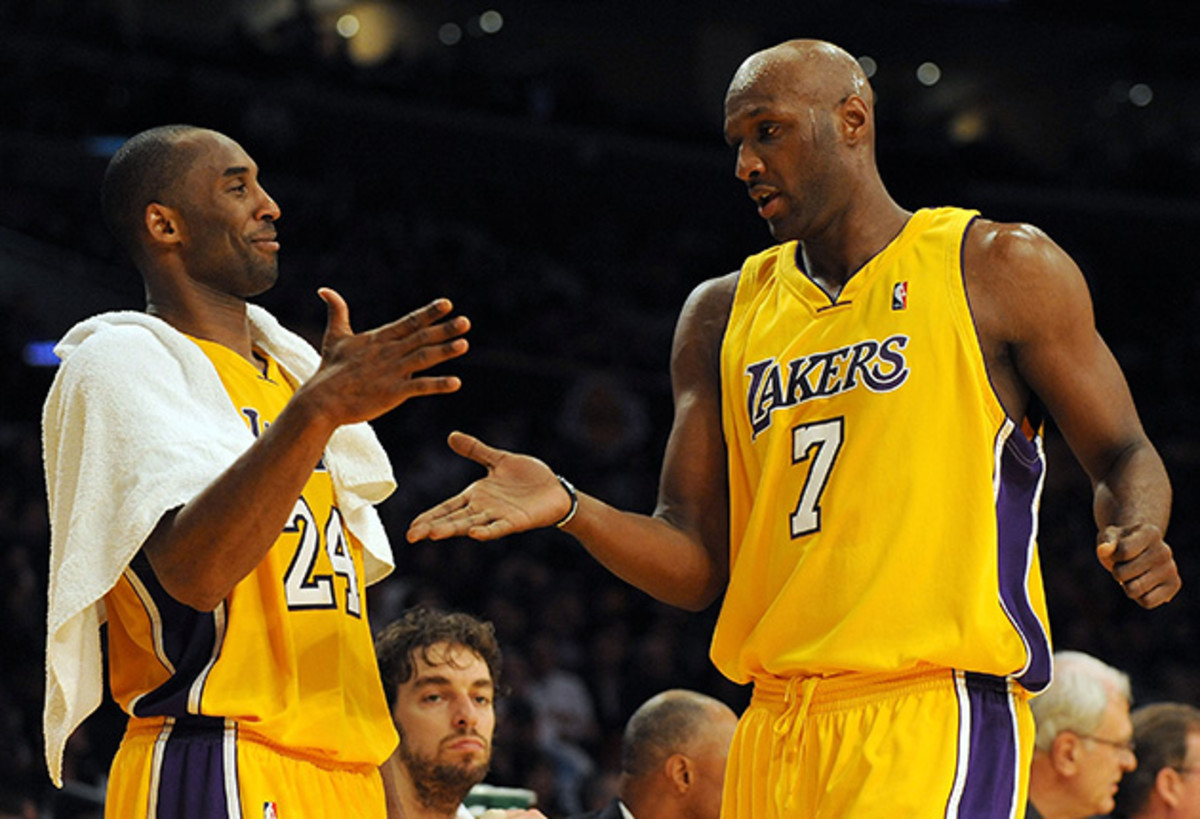
Odom opens up about his life’s tragedies. By Lee Jenkins.
The happiest Laker is the one whose father was addicted to heroin, whose mother died of colon cancer when he was 12, who attended three high schools, had his first college scholarship revoked before the fall semester of his freshman year, became a subject of three college investigations, declared for the NBA draft, tried unsuccessfully to pull out of the draft, was picked by arguably the worst franchise in sports, violated the league's antidrug policy twice within eight months and after finally getting his life together, went home to New York City for an aunt's funeral and wound up burying his 6½-month-old son, then getting robbed at gunpoint.
"That's my book," says Lamar Odom. "That's my movie. It's a big bowl of gumbo."
…
Odom's clothing line includes scores of T-shirts depicting animals and religious images. But there is one emblazoned with a framed black-and-white photograph of a basketball court. It is the court at Lincoln Park where Odom played the night his mother died. Superimposed over the bottom right corner is a bright red rose. As Odom walks on the beach, about as far from that court as he can get in the continental U.S., he is asked if the rose is a symbol of his mom. "No," he says. "It's a symbol of what can grow, even from there."
The rose is Lamar.
May 19, 2009
Odom finds a home on a talented Lakers’ team. By Jack McCallum.
Even as the Kobe-wants-to-go story played out in the press—it was not resolved until opening day—the players were kicking back at lunch and dinner "through the grace of Lamar Odom," as Turiaf puts it. Odom had hired a well-known Hawaiian chef, Sam Choy, to prepare meals for the entire team. "Instead of going back to our rooms after practice, we stayed together, put our feet up, hung out and talked," says Walton. "All of us, every meal, Kobe included. It was a major, major factor in us coming together." Plus, the food was damn good. "Sam made a chicken crusted with, I kid you not, Cap'n Crunch," says Odom. "Best thing you ever ate in your life." Fitting that what has turned into a Leave It to Beaver season began with a sugary cereal.
June 25, 2009
Bryant, Odom and the rest of the Lakers beat the Magic in the 2009 Finals. By Chris Ballard.
The Magic had done everything possible on the play and Bryant had still beaten them. "I was just locked in, completely locked in," Bryant said after the game, sitting at a podium in a champagne-soaked T-shirt. "I think it's a matter of understanding the moment."
• MORE NBA: Lakers' Hibbert among players who want to cash in
June 24, 2010
The Lakers win their second straight title by beating the Celtics. By Chris Ballard.
WHEN IT WAS OVER, AND CONFETTI FLUTTERED DOWN IN STAPLES CENTER LIKE a June snowfall, it was hard not to think that the Lakers had us in mind this year.
Sure, this team was constructed, groomed and deployed with the goal of winning a championship, but one could be forgiven for thinking the Lakers had a second, equally important goal in mind: our entertainment.
...
Phil Jackson couldn't just coach the team to another title, his 11th, without controversy, so talk began early about whether he'd come back or where else he might end up. Andrew Bynum, he of the great potential unrealized, injured himself again only to play valiantly in the Finals. Sasha Vujacic did his part by dating Maria Sharapova, while Shannon Brown appeared on the scene seemingly genetically engineered with the specific purpose of rousing dozing fans from their Southern California haze and orchestrated about a dozen of the most magnificent aerial assaults upon the rim ever witnessed. And finally, Lamar Odom up and married himself a Kardashian, which is the surest sign of all that the Lakers had us in mind when they pieced together this season.
In the end the whole group of them stood there up on that podium, a big, happy (if dysfunctional) NBA family. They might not have played like the 1980s versions of the Lakers, but this group was every bit as Showtime as its forebears, only in a different and quite gratifying way. The only question now, of course, is whether there will be a second sequel.
December 19, 2011
The Lakers cope with the news that Odom was—almost—traded to the Hornets for Chris Paul. By Chris Mannix.
When the NBA, as owner of the Hornets, torpedoed the three-team, six-player trade that would have sent All-Star point guard Chris Paul from New Orleans to the Lakers last week, a pressing question lingered: How would the players who had been part of the scuttled deal react? In the case of forward Lamar Odom: badly. On Friday he asked Los Angeles to be traded, a request that G.M. Mitch Kupchak granted two days later when he sent Odom and a second-round pick to the Mavericks for an $8.9 million trade exception and a protected first-round pick.
The loss for L.A. is considerable: Size has been its biggest asset the past four years, with the 6'10" Odom joining 7-footers Pau Gasol and Andrew Bynum in a frontcourt rotation that helped the Lakers finish third in the league in rebounding (44.0 per game) and seventh in points in the paint (42.1) last season. Backups Derrick Caracter and Luke Walton, who combined for 3.7 points and 2.2 rebounds, must now try to make up for Odom's production (14.4 points, 8.7 boards). "I don't like it," said Kobe Bryant. "You're talking about the Sixth Man of the Year last year. He played lights out."
February 6, 2012
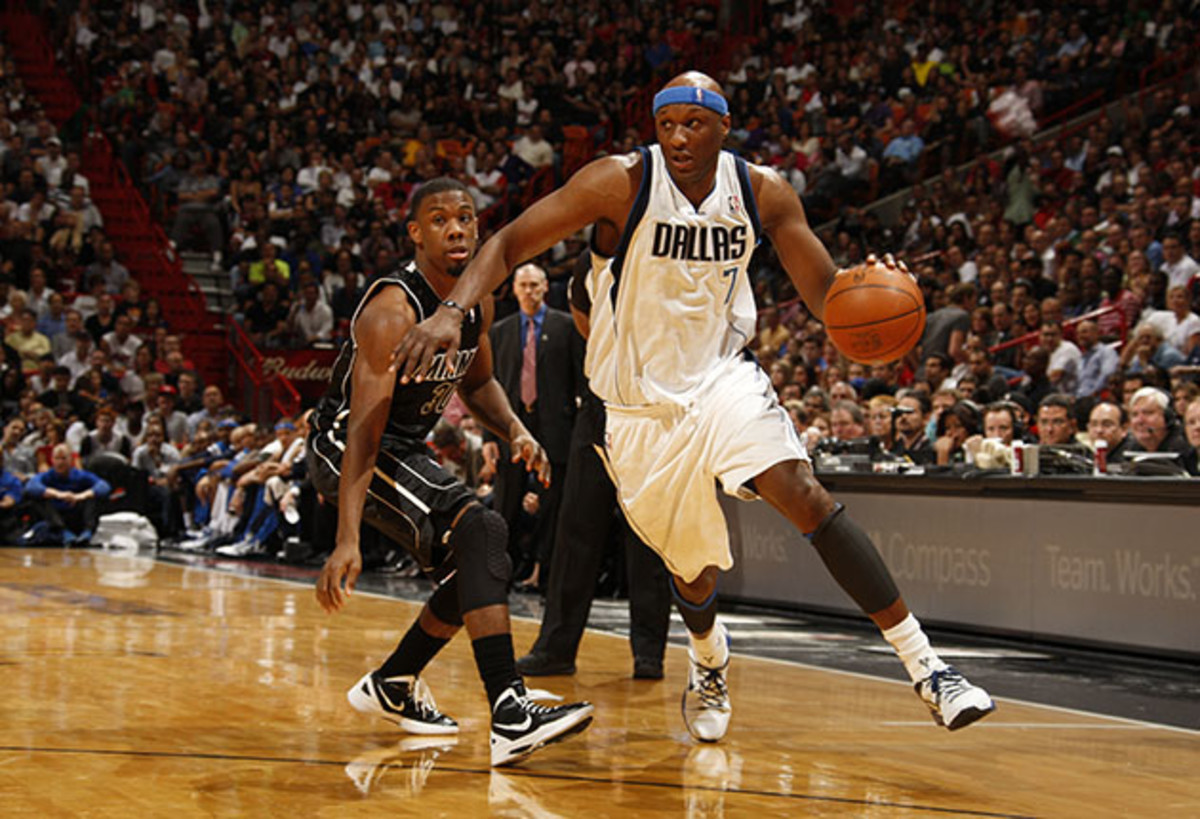
Odom, upset by the trade talk, is later dealt to the Mavericks. Things don’t go as planned. By Chris Mannix.
Poor conditioning (Dallas owner Mark Cuban says the team, as it did with Dirk Nowitzki, has considered giving Odom a few games off to get in shape) and uncertainty about his role in the offense have contributed to Odom's sluggish (8.0 points, 4.7 rebounds) start. Odom has not adjusted to Dallas's up-tempo attack after spending the last six years in Phil Jackson's triangle offense.
March 25, 2013
Nearing its end, Odom’s career comes full circle with the Clippers and he reflects on playing with Chris Paul. By Lee Jenkins.
The Clippers had 21 lottery picks from the time the system was implemented, in June 1985, to the time Paul arrived, in December 2011. They had talent, with nobody to nurture it. They acquired Doc Rivers to play point guard, but he stayed only a season, and Mark Jackson, but he lasted just two. Lamar Odom was voted captain at 21, a year removed from Rhode Island, and he wanted to command the Clippers the way Magic Johnson did the Lakers, with fancy passes and tough love. "I couldn't do it," Odom says. "But he can." He points at Paul, standing on the practice court with Vinny Del Negro, holding a marker and scribbling on the coach's whiteboard. At 6 feet, Paul is nine inches shorter than Magic, but they carry themselves the same way, taskmasters disguised as cheerleaders. "These are people who have the ability to blend everybody around them together," Odom says, "whether they're taking you to dinner or kicking your ass."
